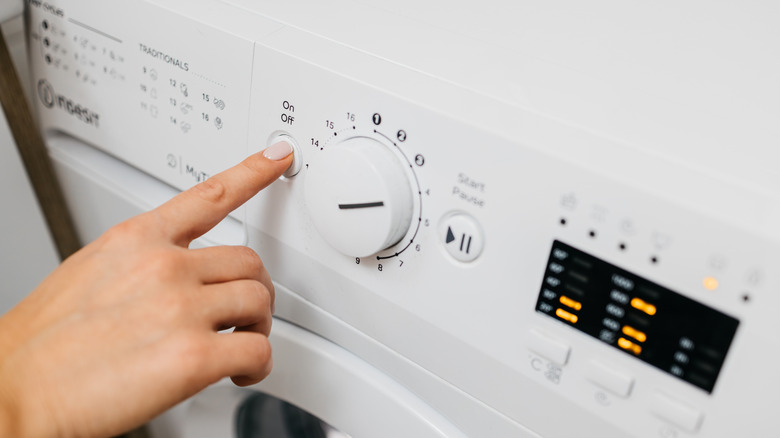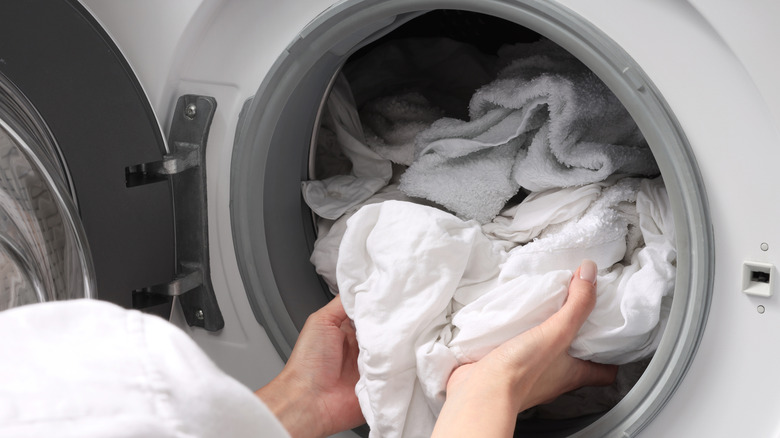The Convenient Wash Cycle That May Be Wasting Your Money
Your washing machine is a pivotal household appliance — just try to imagine what life would be like without one. Regardless of whether you choose a front-load or top-load washing machine, they all share many of the same cycles, like standard, heavy duty, delicate, and quick wash. The quick wash option is meant to be used sparingly — not for every load, but for small loads of lightly soiled clothes, like a few shirts you only wore for an hour or an outfit you need cleaned in a hurry. While this option is convenient since it uses a fraction of the time of a standard load, it is also a wash cycle that ends up wasting your money.
Quick cycles are not only shorter than standard cycles (sometimes, up to half the time shorter), but they also use less water and often run at cooler temperatures. Overall, this makes these cycles less effective at tackling stubborn stains. If the clothes aren't properly cleaned, you may need to re-wash them. Additionally, the shorter rinse time in quick wash cycles can leave detergent residue on clothes, potentially requiring a re-rinse. It's also important to know that, even though quick washes are designed for small, lightly soiled loads, many people overlook this and overload the drum. Although this might seem like a time-saving measure, it can actually lead to your clothes not agitating or rinsing properly, resulting in the need to re-wash them.
How to use your washing machine efficiently
So, how can you wash your laundry both conveniently and efficiently without wasting money? First, you can choose to use the quick cycle on your washing machine, as long as you stick to washing small, very lightly soiled loads. Don't choose the quick cycle load size every time — only use it when necessary. Instead, wait to wash your laundry until you have enough for a full load, and wash on the "normal" or "standard" cycle. Make sure to avoid overstuffing your washer — something that almost everyone gets wrong when doing laundry. There should always be enough space for your hand to fit between the top of the laundry and the drum, allowing the clothes to rinse and agitate correctly.
Regardless of whether using the standard or quick cycle, it's most efficient to use cool (or cold) water when possible. Your washer uses a ton of energy just to warm up the water that is in it — about 90% of the total energy used. Switching to a cool or cold temperature setting can cut the energy use for that load by more than half, saving you money on every wash. Finally, it's essential to optimize your detergent use, regardless of cycle setting. In fact, using too much laundry detergent causes more problems than you think, like creating excessive suds that require extra rinsing, or leaving residue on clothes and inside the machine. Instead, aim to use about one and a half ounces of detergent for a normal load of laundry (less if it's a small load). Any more than that and you risk wasting detergent, triggering extra rinse cycles, and causing buildup that can damage your washing machine over time — and will cost you extra money in the long run.

